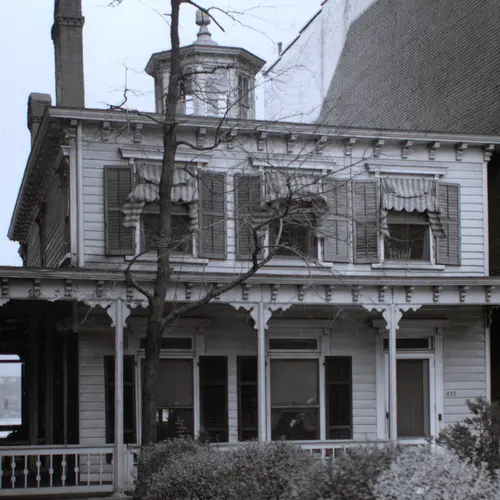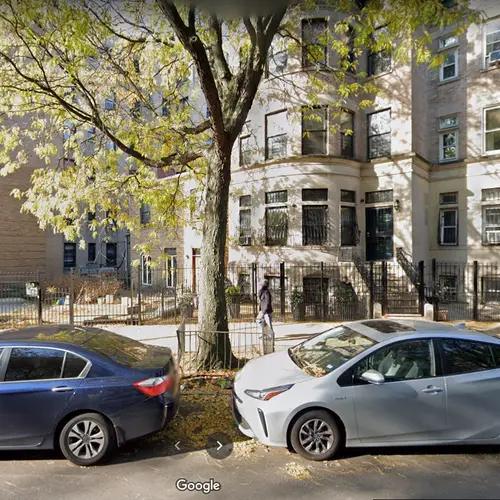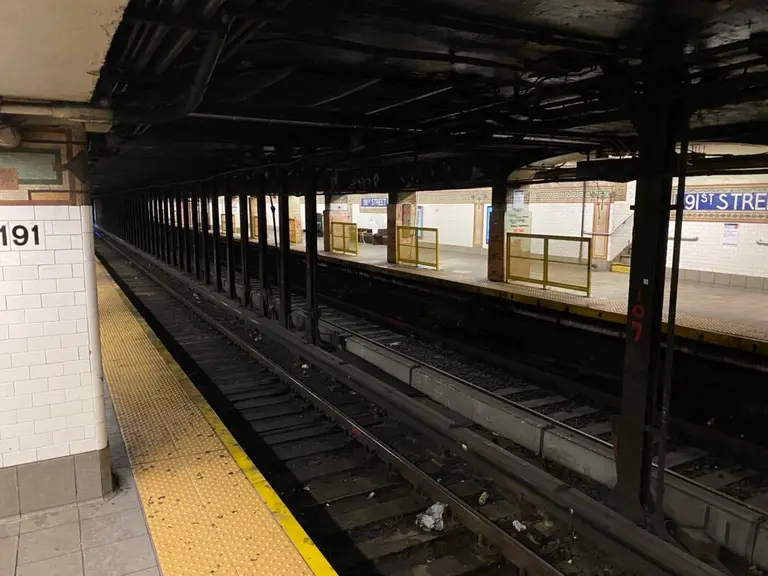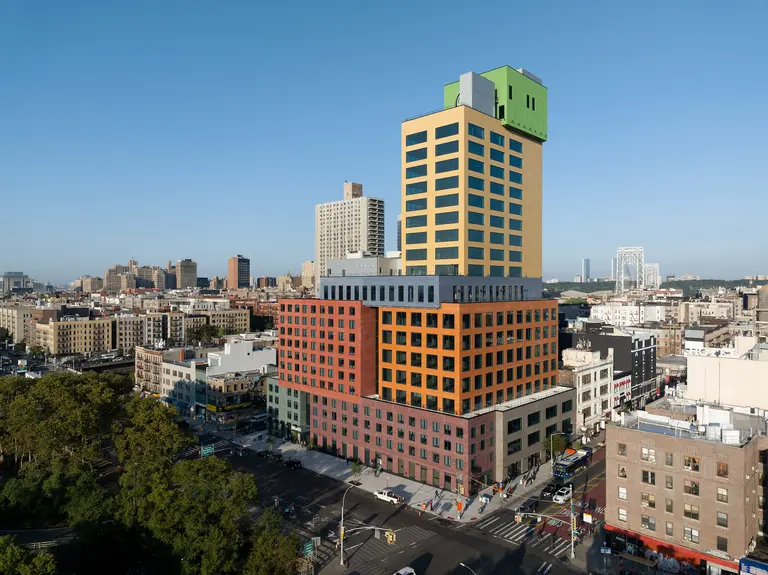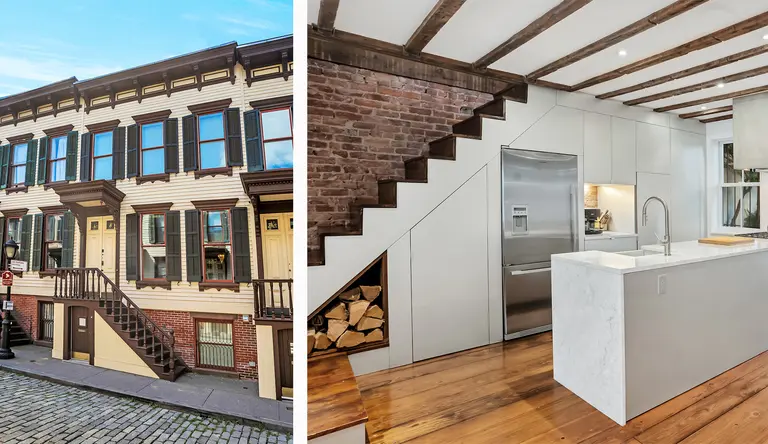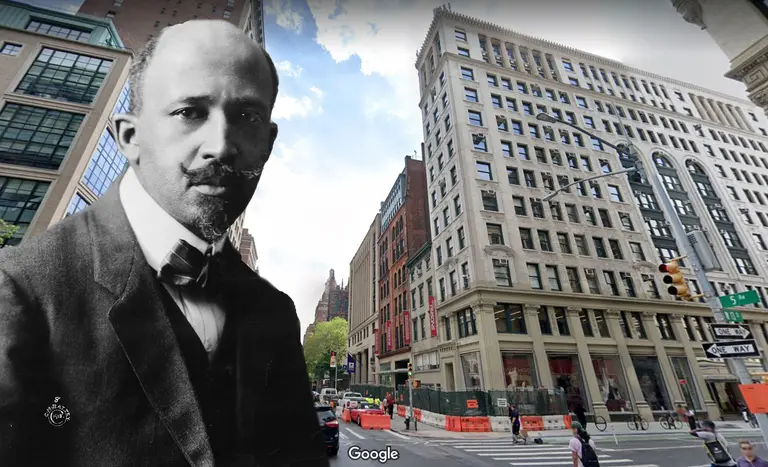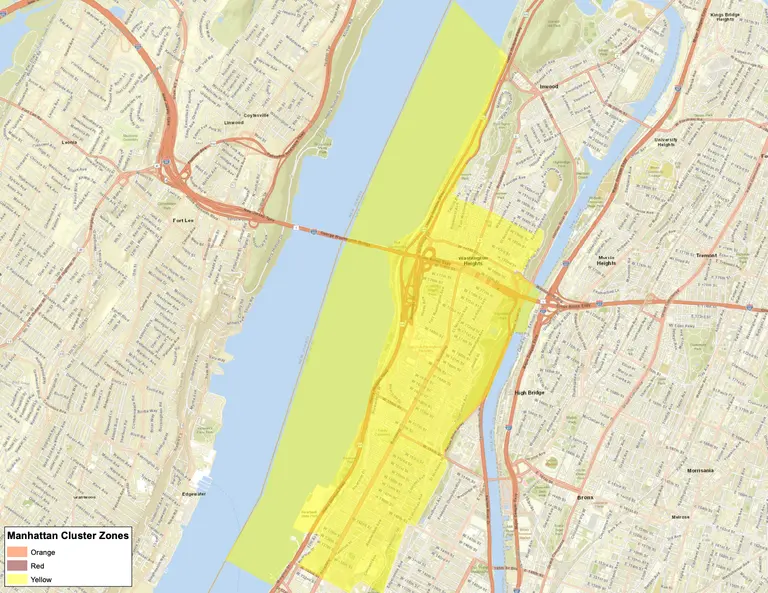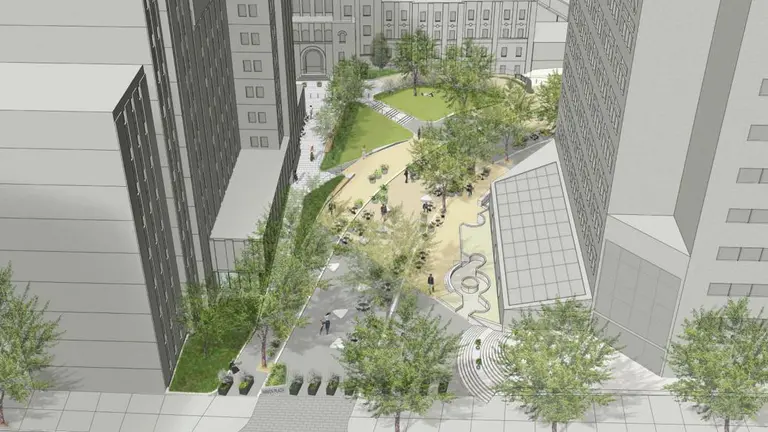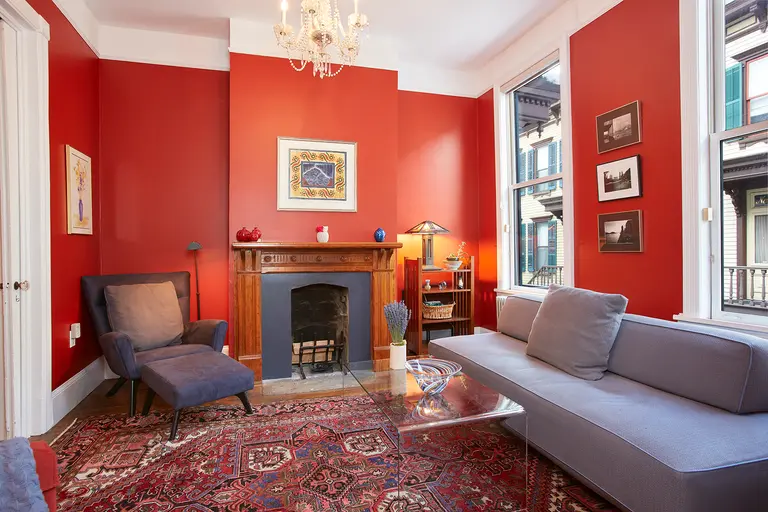Preservationists, pols fight to save Washington Heights home with Underground Railroad ties
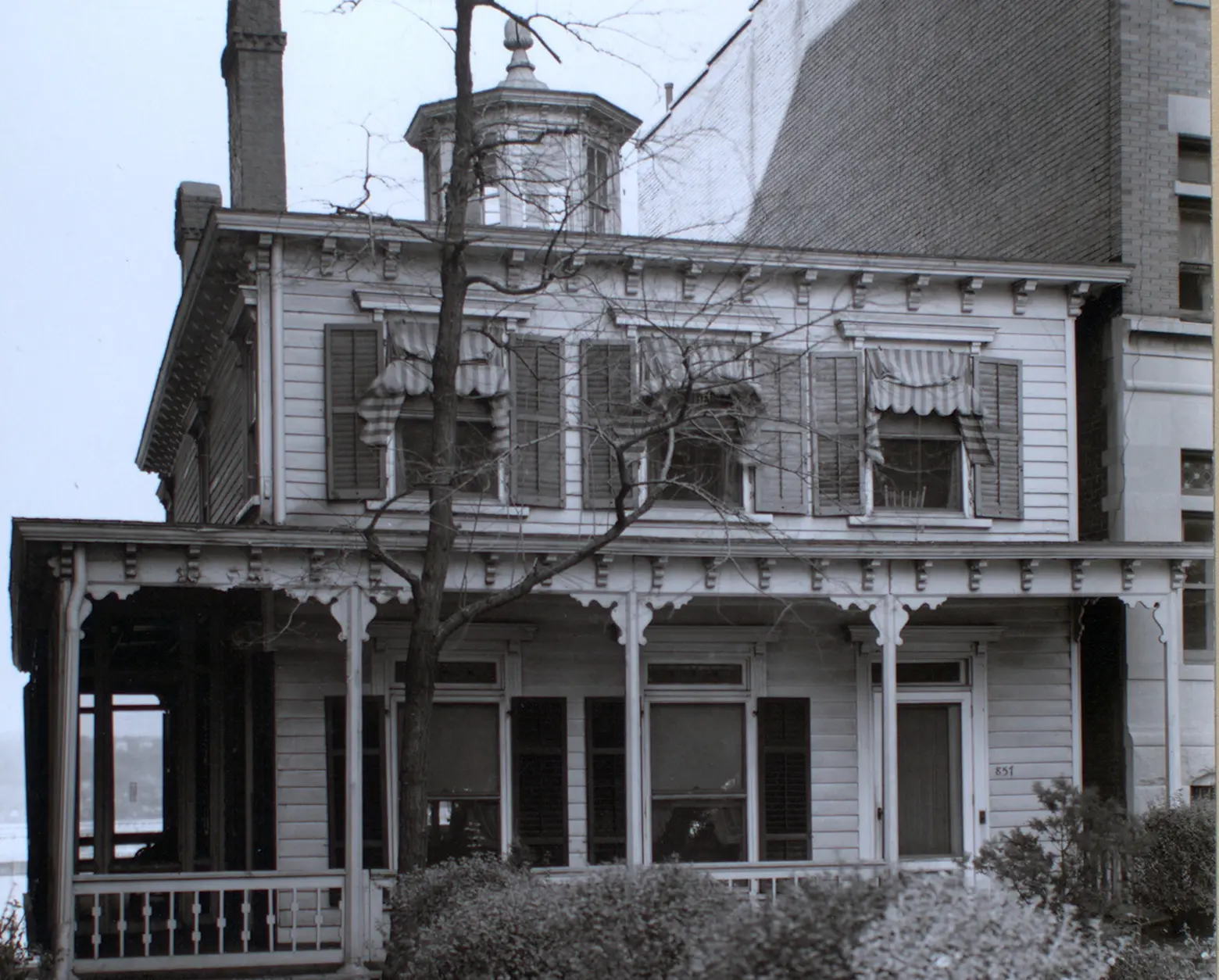
The Miriam and Ira D. Wallach Division of Art, Prints and Photographs: Photography Collection, The New York Public Library. (1937). Riverside Drive, no. 857, at 159th Street, Manhattan, courtesy of the New York Public Library.
Preservationists and local politicians are pushing the city to reverse their decision to not landmark a historic home with abolitionist history in Washington Heights. The two-story wood-frame home at 857 Riverside Drive in Upper Manhattan was owned by anti-slavery activist Dennis Harris who may have also been an Underground Railroad conductor. Despite a demolition permit filed by the current owner, the Landmarks Preservation Commission last November still rejected landmark status for the home because of the architectural alterations made to the original structure.
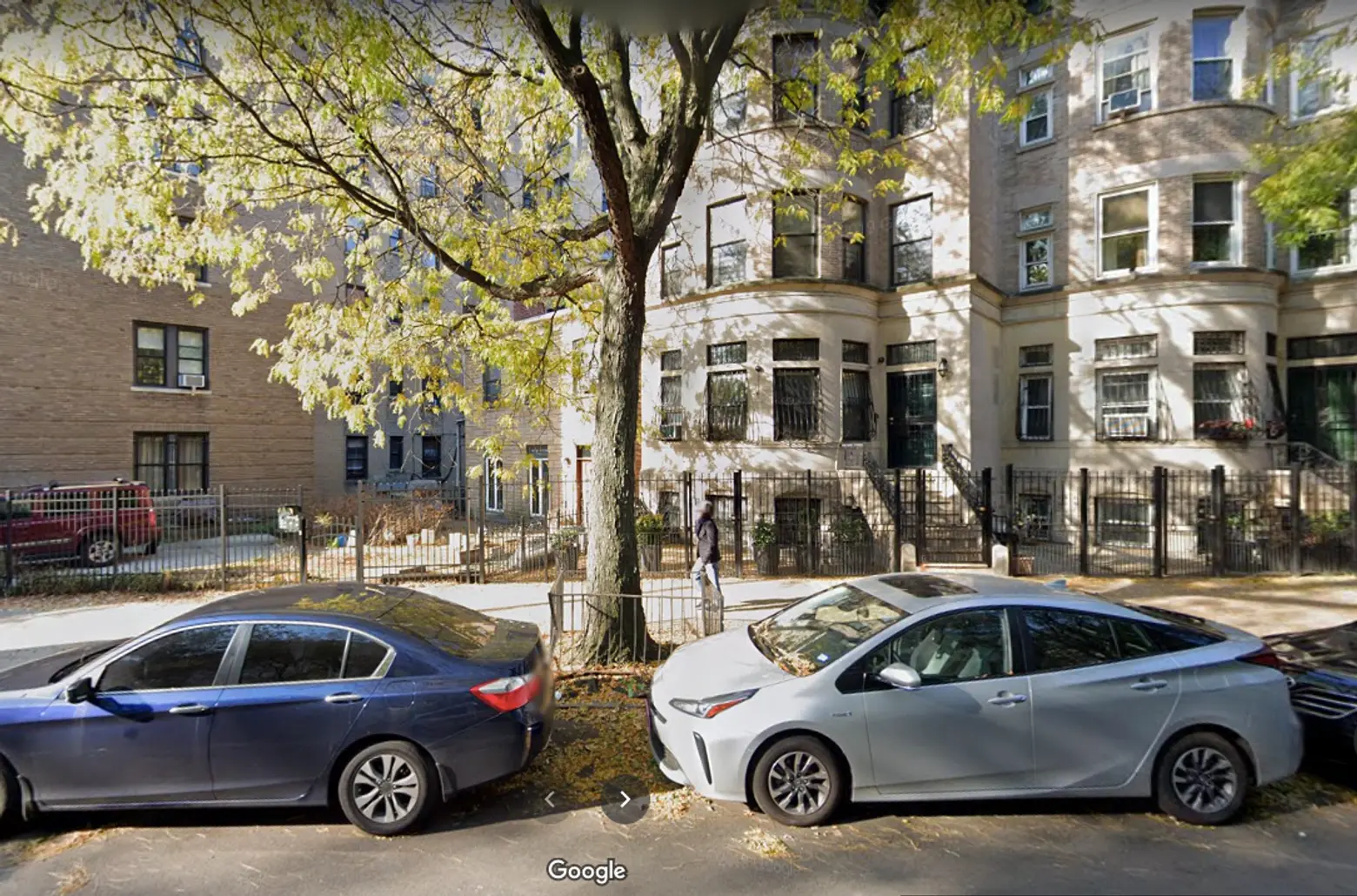
Streetview of 857 Riverside Drive; Map data © 2021 Google
On Friday, The Upper Riverside Residents Alliance, along with Manhattan Borough President Gale Brewer, Council Member Mark Levine, State Sen. Robert Jackson, and Assembly Member Al Taylor, urged the commission to reconsider its decision to save the building from being razed.
Spencer Developers’ Michael Petrokansky filed permits in August for a 13-story residential building at 857 Riverside Drive. According to the Department of Buildings application, the new building would contain 46 housing units. The project requires the demolition of the historic site.
“We’re here because history matters. Landmarks matter,” Brewer said during a press conference Friday, as Patch reported. “Black history matters. Black landmarks matter. And it is really important to preserve places like 857 Riverside Drive because it tells the story of our borough, our city, and our nation.”
According to research conducted by Joseph Amodio that was submitted to the LPC for evaluation, the home was built in 1851 and owned by two ardent abolitionists, Dennis Harris and John Newhouse. Dubbed the Harris-Newhouse Home, the original property incorporated a transitional Greek Revival-Italianate style with an octagonal windowed cupola on top and a wraparound porch on all sides of the house, according to Amodio’s report.
The front porch and the cupola have since been removed and a stucco facade was applied to the front of the house on top of the original exterior. The LPC said these alterations and the home’s condition prevent it from being landmarked. Kate Lemos McHale, director of research for LPC, said the house “retains neither the historic appearance nor adequate historic fabric from the 19th-century abolitionist era.”
Advocates argue 857 Riverside is the only surviving property in Upper Manhattan linked to the anti-slavery movement in New York City. According to the New York Times, of the more than 37,000 properties with landmark status, just 17 of them are related to abolitionism or the Underground Railroad, none of which are located above 29th Street in Manhattan.
The Upper Riverside Residents Alliance, which has launched a website dedicated to their fight and a Change.org petition addressed to Mayor Bill de Blasio and DOB Commissioner Melanie E. La Rocca, plans to continue to fight for designation as well as challenge the demolition application.
Prior to the LPC’s rejection of giving landmark status to 857 Riverside, it voted to consider landmarking another city site with abolitionist ties. In June, the commission calendared the Greek-Revival row house at 227 Duffield Street, which was home to abolitionists Harriet and Thomas Truesdell from 1851 to 1863. A developer filed an application in 2019 to raze the current property to make way for a 13-story mixed-use tower.
While the commission said some verbal accounts of the house list it as a stop on the Underground Railroad, it could not confirm this. LPC staff did recognize the obvious secrecy of housing fugitive enslaved people during this time, making Underground Railroad activity difficult to verify. Following a July public hearing on 227 Duffield where more than 131 people testified in support of designation, the LPC said it will schedule a final vote on the designation at a later date.
However, there may still be hope for preserving 857 Riverside. Last week, the LPC published a new “equity framework” to ensure diversity and inclusion in designations, effective outreach, and transparency and fairness.
“The last year has been one of the most challenging our nation has faced, with attacks on democracy, the pandemic, with the loss of life, damage to the economy and how it exposed systemic failures, as well as the killing of George Floyd, Ahmaud Arbery and Breonna Taylor, and the despair and anger expressed subsequently,” LPC Chair Sarah Carroll said Tuesday. “I believe these events made it important for us to publicly reaffirm our commitment to equity in all aspects of our work.”
The framework was announced the same day the commission calendared three properties that “reflect New York City’s diverse history,” including the former headquarters of the NAACP in Greenwich Village, the Conference House Park Archaeological Site on Staten Island, and the Holyrood Episcopal Church-Iglesia Santa Cruz in Washington Heights.
RELATED:
